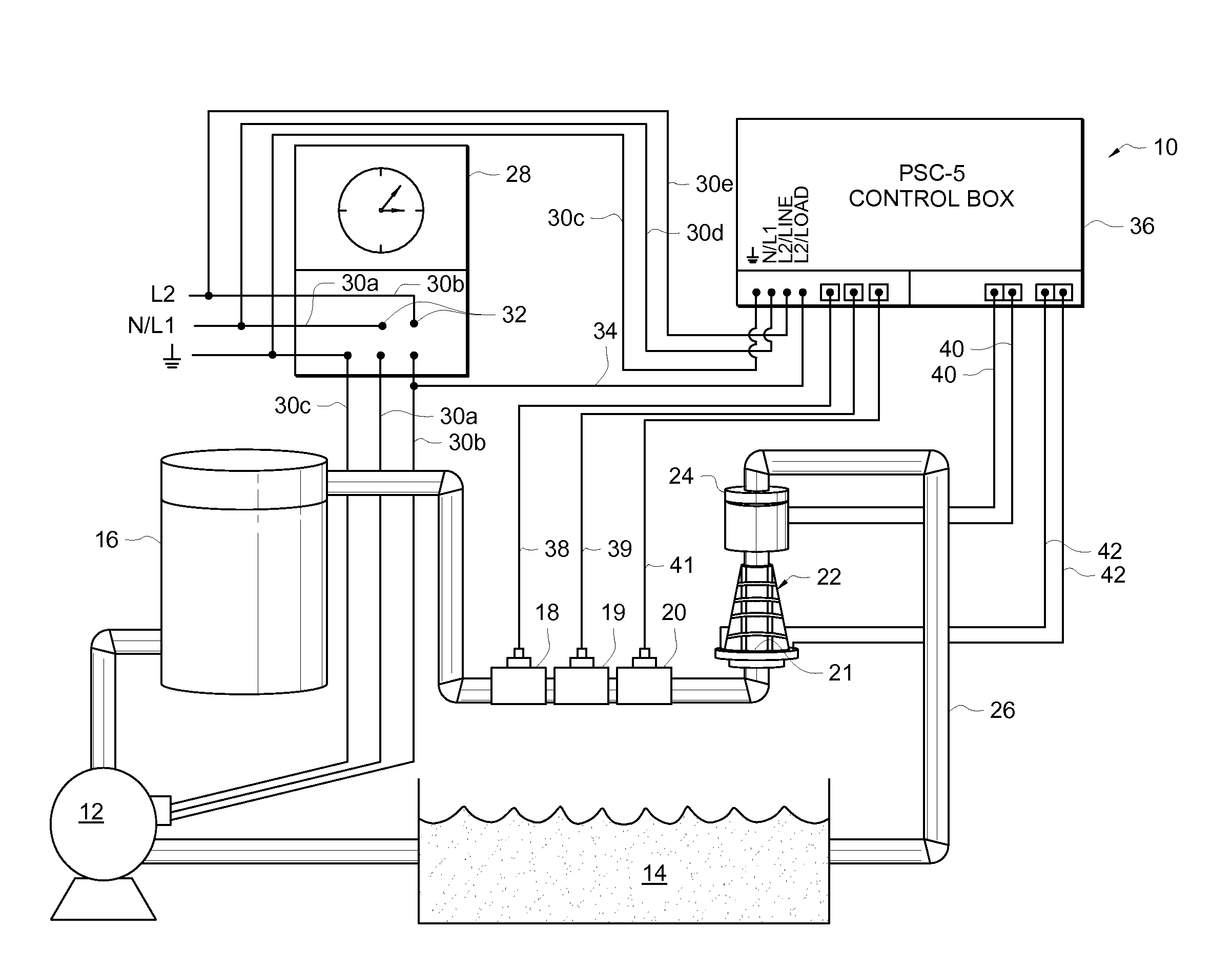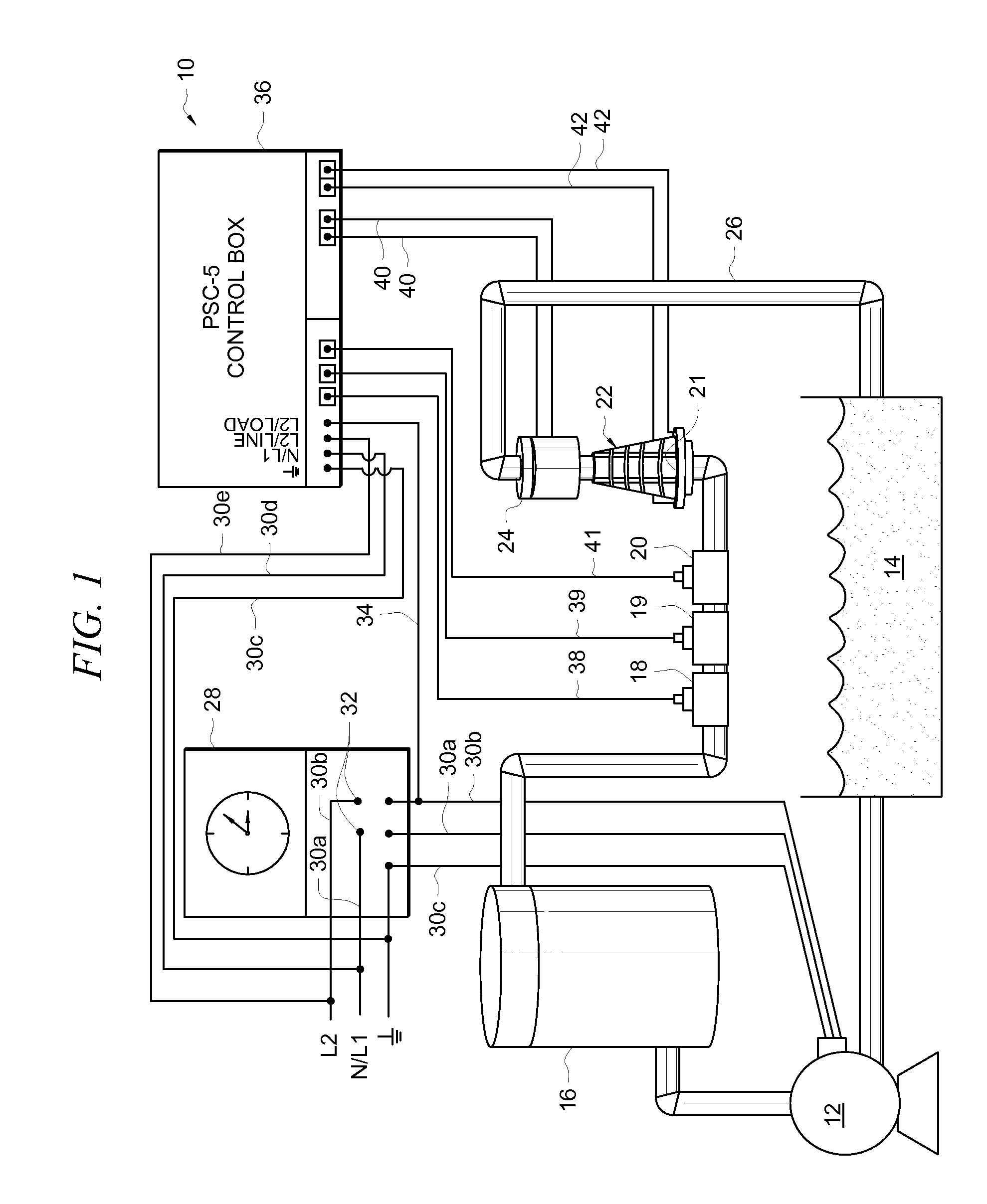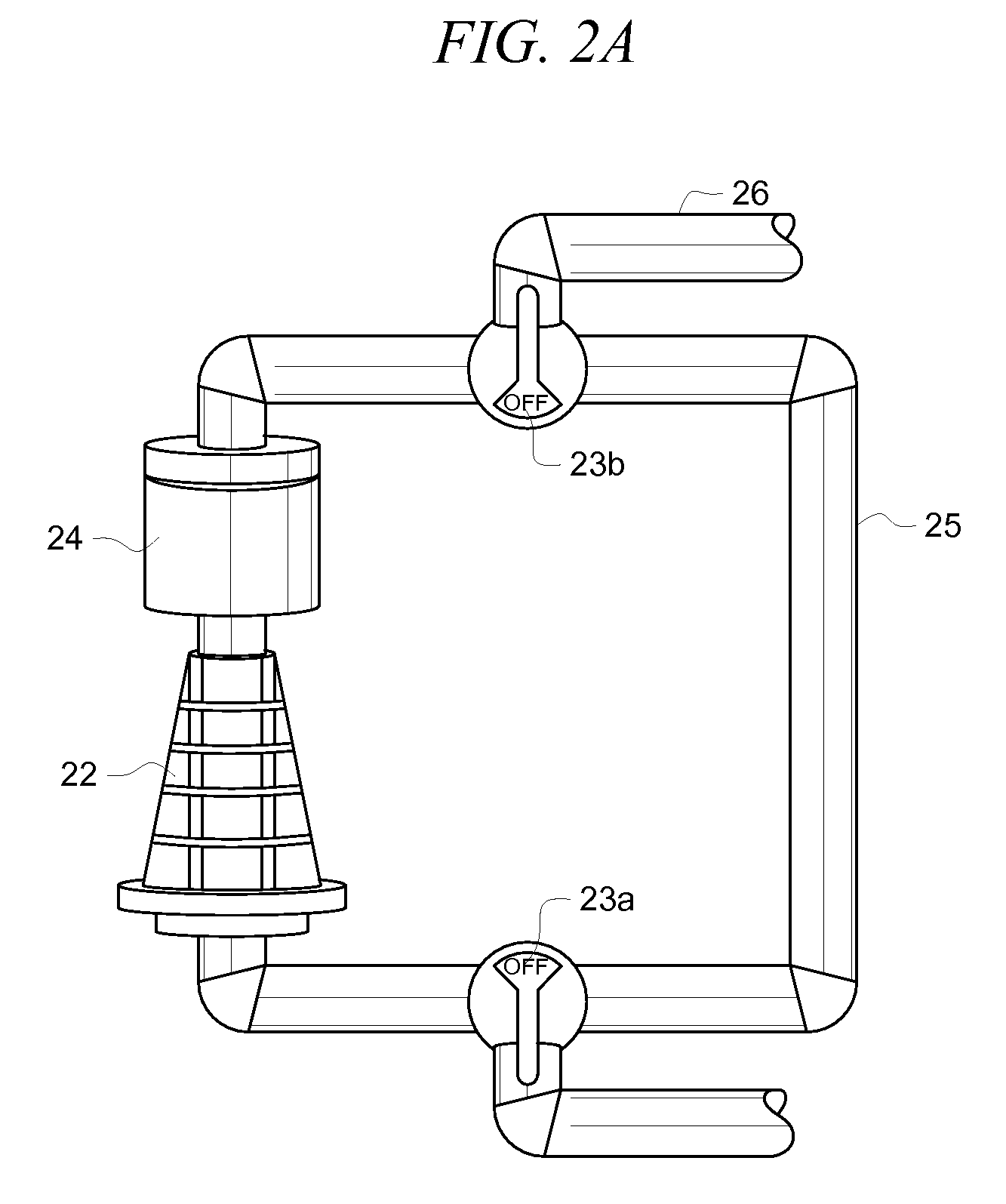Self-Cleaning Chlorine Generator with Intelligent Control
- Summary
- Abstract
- Description
- Claims
- Application Information
AI Technical Summary
Benefits of technology
Problems solved by technology
Method used
Image
Examples
Embodiment Construction
[0054]Referring now to the FIG. 1, it will there be seen that an illustrative embodiment of the invention is denoted as a whole by the reference numeral 10.
[0055]Circulation pump 12 draws water from swimming pool 14, or spa, fountain, well, or other main body of water, not shown, and pumps said water through filter 16, pH probe 18, ORP (oxidation reduction potential) probe 19, flow sensor 20, one-way check valve or other water-entrapment means 21 (such as a three-way valve with motor-operated actuators or a Hartford loop), electrolytic cell 22, also referred to herein as the cell, acid pump24, also referred to herein as an acid infusion means, and into pool 14 through return line 26.
[0056]The preferred water-entrapment means 21 in the embodiment of FIG. 1 is a Hartford loop, also known as an S-loop. If a one-way check valve is used, the pressure of the water is sufficient to open it.
[0057]In installations lacking a cell isolation / bypass structure, such as the installation of FIG. 1,...
PUM
| Property | Measurement | Unit |
|---|---|---|
| Reduction potential | aaaaa | aaaaa |
Abstract
Description
Claims
Application Information
 Login to View More
Login to View More - R&D
- Intellectual Property
- Life Sciences
- Materials
- Tech Scout
- Unparalleled Data Quality
- Higher Quality Content
- 60% Fewer Hallucinations
Browse by: Latest US Patents, China's latest patents, Technical Efficacy Thesaurus, Application Domain, Technology Topic, Popular Technical Reports.
© 2025 PatSnap. All rights reserved.Legal|Privacy policy|Modern Slavery Act Transparency Statement|Sitemap|About US| Contact US: help@patsnap.com



